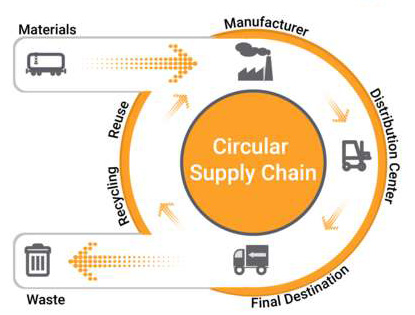|
 |
| Will Linear Supply Chain soon become a passé giving way to Circular Supply Chain? |
 |
Faria Zafar |
|
| Steven Stuetermann, managing vice president in the Gartner Supply Chain practice was quoted as saying, “Organizations are under pressure to reduce the amount of waste they’re producing — from consumers and governments alike”. There is a shift towards sustainability and waste reduction. In 2019, Gartner predicted that by 2029 the linear economy will be replaced by circular economy. This means that businesses should prepare themselves for transition from linear supply chain to a circular supply chain. |
|
Since the time products are being manufactured and distributed, the supply chain process has remained intact – raw material comes in, gets converted to the end product, distributed to the end user who uses it for a while and finally the product is thrown away resulting in waste. This is the point where circular supply chain comes into picture. In a circular supply chain the waste is taken back by the manufacturers who remake or refurbish the product or sometimes melt it down to use it as raw material to make a new product. This way the product goes back into the supply chain. This system is helping companies in not only reducing waste but also in bringing down their production costs. In a circular supply chain, waste is perceived to be an opportunity to create value. |
 |
The shift from linear supply chain to circular supply chain needs collaboration from product designers, suppliers, logistic partners and other players in the supply chain and product manufactures. Businesses have been taking up initiatives to incorporate circular supply chain in their system. Nike’s “Reuse A Shoe” is one such initiative where the company encourages its customers to recycle their old shoes. Apple, Adidas and Dell are also moving ahead in adopting the change. |
|
|
| To continue being profitable in future, businesses need to make a shift towards a sustainable supply chain system as soon as possible. |
| Read Also: |
|
|
|
| |